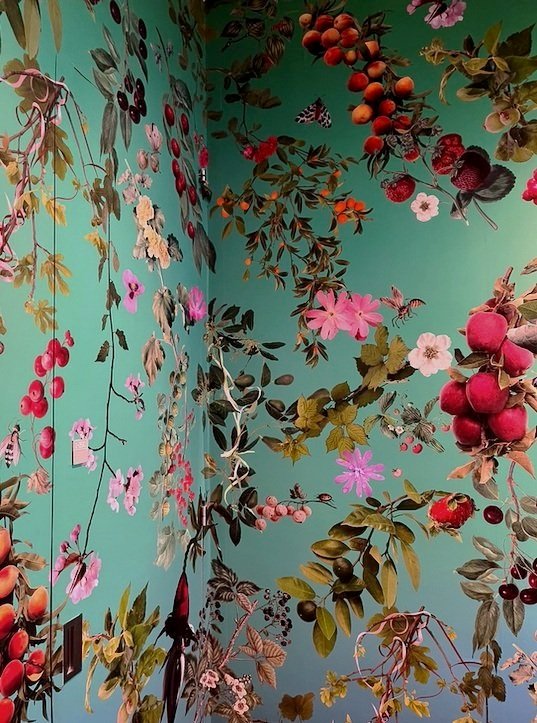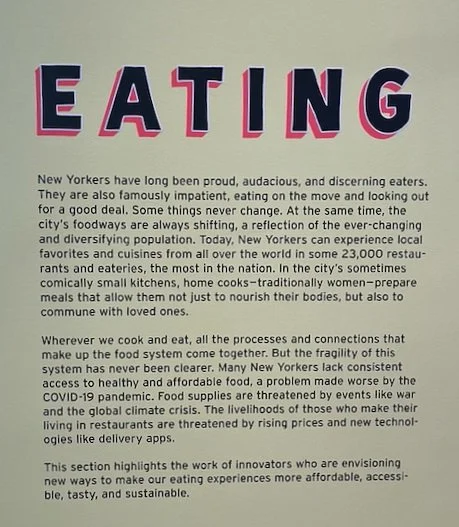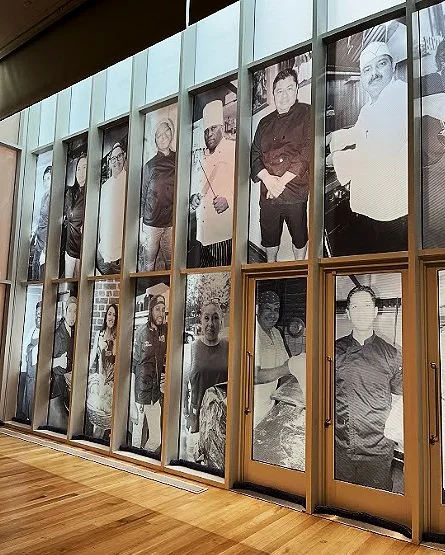BIGGER THAN THE PLATE
By Alex Crow

Inside the Museum of the City of New York is a new exhibit called “Bigger than the Plate,” which examines the food network and supply systems within NYC. Food is a staple of our everyday lives, but how often do we really think about how our meals got to our plates? I went into my visit unsure of what to expect. However, I can say that this experience has changed the way I think about every single bite of food I take.
The exhibit has a simple and digestible layout. It walks visitors through three sections that mirror the three parts of the food system: trading, producing, and eating. With each section, visitors are able to see how these individual parts take form right here in New York City. There is a historical aspect to it as well, with examples of how these parts and the practices within them have evolved from the time the Lenape lived on this land to the present day. The exhibit keeps visitors engaged through a collaboration of sights, sounds, and smells in presenting the information. We’ve certainly all experienced those moments in exhibits where they become incredibly dull and seem never-ending, but let me assure you, you will not have a single one of those experiences in this exhibit.
While it is very interesting to learn about the three individual parts of the food system, it was something I had never really considered before. I think the most impactful takeaways lie in the time dimensional storylines of this exhibit; not only does this exhibit portray how trading, producing and eating have changed since the time of the Lenape, but it also looks to the future too. The exhibit highlights how these changes coupled with the changing climate of the globe are on a problematic trajectory. Food has become increasingly about maximizing returns and profits and less about the items themselves. This has caused food production to become industrialized, a consequence of which, as the exhibit puts it, causes “the distance between production and consumption to grow”. Products that used to be produced within the City boundaries are now outsourced. For example, NYC used to produce 70% of the nation’s sugar, but the last refinery was closed down in 2004. The prioritization of profit is not the only threat to New York City’s self sustainability; climate change is, as well. The City used to be a center for oyster harvesting, but the waterways have become so polluted that they are inhabitable for oysters now.
Most of you are probably thinking, just like I did, that a self-sustaining food system within a city is not all that important in this day and age. With everything we have, products can get from coast to coast in just a few hours. But what happens when this network of importation and exportation comes to a halt? The COVID-19 pandemic was a wake-up call to many as it caused major disruptions to the supply chain. Food vendors, who relied on deliveries multiple times a week, found their shelves empty and consumers empty-handed. There was nowhere to turn and no backup plan in place. The exhibit reminds visitors that this will happen again in another emergency if society does not change its ways. If the City had a self-sustaining food system, it would have been much more resilient in this sort of emergency. Not only would a self-sustaining food system assuage these circumstances, the exhibit highlights that it would also help fix other food-related issues within the City. This type of system can decrease the number of food deserts—areas that have little to no affordable and nutritious food. The exhibit points to community gardens as an example; they keep food growth within the City and can also be located in the areas in greatest need.
This exhibit is so much more than just the story of food in NYC. It provides visitors with a lesson, better yet, a warning about the future that lies ahead. This exhibit showed me that even the realm of food is not safe from the greedy and ignorant touch of humanity. It tells us the changes we must make, but now it's up to us to do it.
Alex Crow is a sophomore in Columbia College majoring in Urban Studies. Along with Columbia Eats!, Alex is also a member of the women's rowing team on campus. In her free time, she loves exploring the City, especially to find a new bagel shop and an iced coffee.




